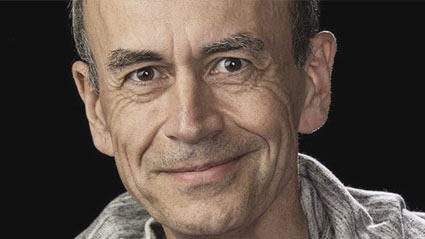Nobel Prize 2013 : Thomas Südhof, a pioneer of synaptic mechanisms
20 October 2013

Thomas Südhof
Ralf Schneggenburger shares his views on the 2013 Nobel Prize in Physiology or Medicine laureate.
The 2013 Nobel Prize honours three scientists who have solved the mystery of how the cell organizes its transport system, and how vesicles fuse with other membranes. One of the Nobel Laureates is Thomas Südhof, who was interested in particular in how nerve cells communicate with one another in the brain. “Vesicle fusion is a fundamental process which is indispensable for communication between nerve cells” explains Prof. Ralf Schneggenburger, head of the Laboratory of Synaptic Mechanisms at EPFL and member of Synapsy, who has collaborated with Thomas Südhof in the past. He shares his views on the new Nobel Laureate.
In what way Thomas Südhof has been a pioneer in the understanding of synaptic mechanisms?
Thomas Südhof is driven to understand the molecular mechanisms of how synaptic vesicles fuse with the plasma membrane. Vesicle fusion is a fundamental process which neurons use to communicate with each other. During the last 20 years, Thomas Südhof has identified many proteins that regulate vesicle fusion at the synapse. He has pioneered mouse genetics in the functional study of many of these proteins. With these tools, he could unravel many of the molecular steps involved in vesicle fusion at synapses.
How is Synapsy’s research, particularly in autism, linked to Thomas Südhof findings and research?
Amongst his search for proteins involved in synapse function, Thomas Südhof also discovered a group of proteins that bridges the presynaptic and postsynaptic side of the synapse, the Neurexin – Neuroligin proteins. Human geneticists found later that autism patients can carry mutations in Neurexins, Neuroligins and related structural proteins of the synapse like Shank. An important research area in our NCCR is to understand how mutations in these genes affect the validation of synapses during brain development. Thus, we want to understand how such mutations lead to abnormal synaptic circuit development in the diseased brain.
On what specific research have you been collaborating with him?
One of the central interests in our lab, which we share with Thomas Südhof’s lab, is how Ca2+ ions regulate vesicle fusion. Thomas Südhof has shown that Synaptotagmin proteins mediate the Ca2+ triggering step of vesicle fusion, a process that we also study. In addition, we have been collaborating with Thomas Südhof to analyze the function of RIM proteins, an important group of scaffolding proteins in the nerve terminal. Together, we could show that RIM proteins hold Ca2+ channels close the vesicle fusion sites in the nerve terminal.
The new Nobel Laureate is still very active in research. On what is he working now?
Indeed, Thomas Südhof’s lab is amongst the most active labs in the wider research area of synaptic transmission. Besides working on questions of Ca2+-regulation of vesicle fusion, he is also using mouse genetics to model psychiatric disease, investigating the Neuroligin – Neurexin complex similar to approaches in the NCCR. Beyond this, Thomas Südhof wants to understand neurodegenerative disease at the synapse. He is also looking into methods of stem cell replacement with the prospect to cure brain disorders. Indeed, it can be expected that Thomas Südhof will continue to drive the scientific progress also in these more translational areas of synapse- and neuroscience research.
Author : Anne-Muriel Brouet, EPFL
